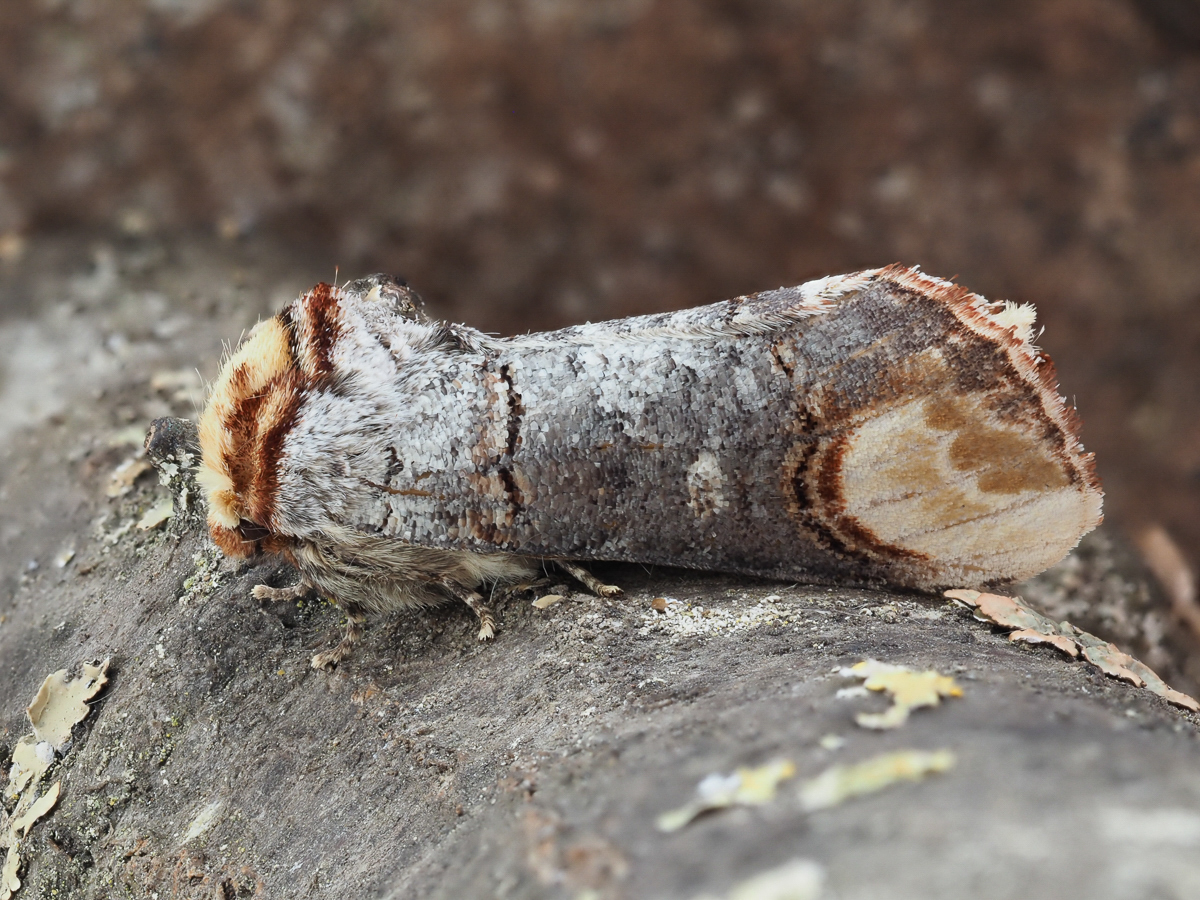
Photo © Andy Mitchell
The buff-tip (Phalera bucephala) is a moth of the family Notodontidae. It is found throughout Europe and in Asia to eastern Siberia. The species was first described by Carl Linnaeus in his 1758 10th edition of Systema Naturae.
This is a fairly large, heavy-bodied species with a wingspan of 55–68 mm. The forewings are grey with a large prominent buff patch at the apex. As the thoracic hair is also buff, the moth resembles a broken twig when at rest. The hindwings are creamy white. This moth flies at night in June and July and sometimes comes to light, although it is not generally strongly attracted.
The young larvae are gregarious, becoming solitary later. The older larva is very striking, black with white and yellow lines. It feeds on many trees and shrubs (see list below). The species overwinters as a pupa.
Historically, the buff-tip moth has been referred to as a pest due to their tendency to feast upon apple trees in Lithuania during the 1900s. Outbreaks of this species may increase in areas with high levels of environmental nitrogen compounds.
For details see Robinson et al., 2010.
Source: Wikipedia
The primary larval foodplants are Alder (Alnus glutinosa), Beech (Fagus sylvatica), birches (Betula spp.), Blackthorn (Prunus spinosa), cherries (Prunus spp.), elms (Ulmus spp.), False-acacia (Robinia pseudoacacia), Hawthorn (Crataegus monogyna), Hazel (Corylus avellana), Hornbeam (Carpinus betulus), Laburnum (Laburnum anagyroides), limes (Tilia spp.), oaks (Quercus spp.), Persian Ironwood (Parrotia persica), Roble (Nothofagus obliqua), Rowan (Sorbus aucuparia), Sweet Chestnut (Castanea sativa), Sycamore (Acer pseudoplatanus), Wild Plum (Prunus domestica) and willows (Salix spp.).